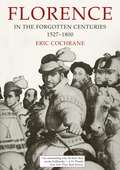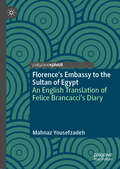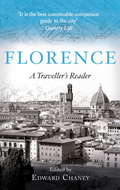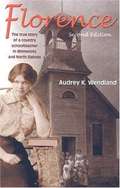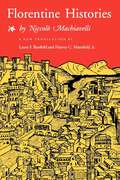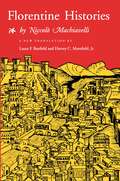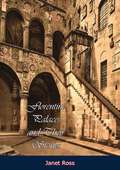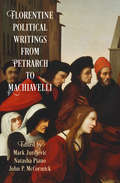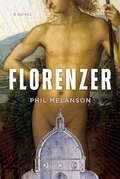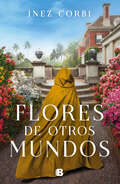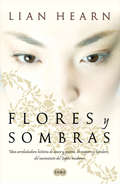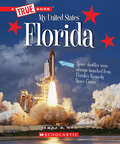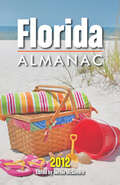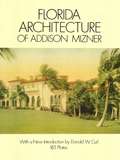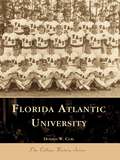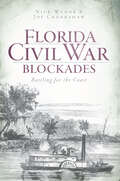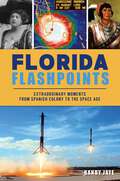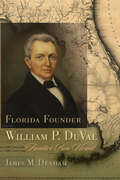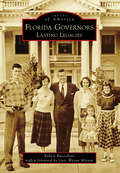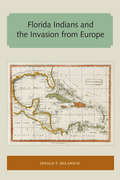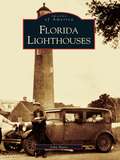- Table View
- List View
Florence in the Forgotten Centuries, 1527–1800: A History of Florence and the Florentines in the Age of the Grand Dukes
by Eric CochraneThe city of Florence has long been admired as the home of the brilliant artistic and literary achievement of the early Renaissance. But most histories of Florence go no further than the first decades of the sixteenth century. They thus give the impression that Florentine culture suddenly died with the generation of Leonardo, Machiavelli, and Andrea del Sarto. Eric Cochrane shows that the Florentines maintained their creativity long after they had lost their position as the cultural leaders of Europe. When their political philosophy and historiography ran dry, they turned to the practical problems of civil administration. When their artists finally yielded to outside influence, they turned to music and the natural sciences. Even during the darkest days of the great economic depression of the late seventeenth and early eighteenth centuries, they succeeded in preserving—almost alone in Europe—the blessings of external peace and domestic tranquility.
Florence's Embassy to the Sultan of Egypt: An English Translation of Felice Brancacci's Diary
by Mahnaz YousefzadehThis book is the first English translation of Felice di Michele Brancacci’s diary of his 1422 mission to the court of Sultan Al-Ashraf Seyf-ad-Din Barsbay of Egypt. Following the purchase of Port of Pisa in 1421, and the building of a galley system, Florence went on to assume a more active role in Levant trade, and this rich text recounts the maiden voyage of the Florentine galleys to Egypt. The text portrays the transnational experiences of Brancacci including those between the East and West, Christians and Muslims, and the ancient and modern worlds. The accompanying critical introduction discusses the unexpected motifs in Brancacci’s voyage, as well as tracing the aftershocks of what was a traumatic Egyptian experience for him. It shows that this aftershock was then measured, captured, and memorialized in the iconic image of Tribute Money, the fresco he commissioned from Masaccio, on his return to his own world in Florence.
Florence: A Traveller's Reader
by Edward ChaneyOf all Italian cities, Florence has always had the strongest English accent: the Goncourt brothers in 1855 called it 'ville tout anglaise'. Though that accent is diminished now, Florence remains for the English-speaking traveller what it always has been - one of the best loved, and most visited, of cities.In this Traveller's Reader, Florence's rich and glorious past is brought vividly to life for the tourist of today through the medium of letters, diaries and memoirs of travellers to Florence from past centuries and of the Florentines themselves. The extracts chosen by cultural historain Edward Chaney include: Boccaccio on the Black Death; Vasari on the building of Giotto's Campanile; an eye-witness account of the installation of Michaelangelo's 'David'; the death of Elizabeth Barrett Browning at the Casa Guidi; and D. H. Lawrence and Dylan Thomas on twentieth-century Florentine society. Sir Harold Acton's introduction provides a concise history of the city from its origins, through its zenith as a prosperous city state which, under the Medici, gave birth to the Renaissance, and up to the Arno's devastating flood in 1966. Sir Harold Acton, man of letters, historian, aesthete, novelist and poet, spent most of his life in Florence. Among his best-known books is The Last Medici, Memoirs of an Aesthete.Currently Professor of Fine and Decorative Arts at Southampton Solent University, Edward Chaney is an honorary life member of the British Institute of Florence and taught at the University of Pisa for six years.
Florence: The True Story of a Country Schoolteacher in Minnesota and North Dakota (second ed.)
by Audrey K. WendlandThe year is 1912 when seventeen-year-old Florence Thompson takes on her first job as a teacher at District 34, the worst country school in Swift County. This is the story of her triumphs and tribulations, living among the Norwegian immigrants in Minnesota during the horse-and-buggy era. It will bring chuckles in the heart to former schoolteachers everywhere. Audrey Wendland, a daughter of Florence, is a freelance writer with credits in a variety of magazines such as Coed, Army Times and Viking, published by the Sons of Norway. Her hobby is genealogy and she draws upon this knowledge to create a picture of life as it was lived in Swift County, and later in Bowman County, North Dakota when Florence decides to cast her lot with the homesteaders. (From the book jacket.)
Florentine Histories
by Niccolo Machiavelli Harvey C. Mansfield Laura F. BanfieldA new tranlation by Laura F. Banfield and Harvey C. Mansfield of Niccolo Machiavelli's Florentine Histories.
Florentine Histories: Newly Translated Edition
by Niccolò MachiavelliThe description for this book, Florentine Histories, will be forthcoming.
Florentine Palaces and Their Stories [Illustrated Edition]
by Janet RossRoss tells the story behind almost 100 palaces in the Florentine region including Palazzo Acciaiuoli; Palazzo Altoviti; Palazzo Corsini, Palazzo Podesta; and many more. A fascinating overview of dozens of palaces in Florence complete with the original illustrations.
Florentine Political Writings from Petrarch to Machiavelli (Haney Foundation Series)
by Mark Jurdjevic John P. McCormick Natasha PianoIn the fifteenth-century republic of Florence, political power resided in the hands of middle-class merchants, a few wealthy families, and powerful craftsmen's guilds. The intensity of Florentine factionalism and the frequent alterations in its political institutions gave Renaissance thinkers ample opportunities to inquire into the nature of political legitimacy and the relationship between authority and its social context.This volume provides a selection of texts that describes the language, conceptual vocabulary, and issues at stake in Florentine political culture at key moments in its development during the Renaissance. Rather than presenting Renaissance political thought as a static set of arguments, Florentine Political Writings from Petrarch to Machiavelli instead illustrates the degree to which political thought in the Italian City revolved around a common cluster of topics that were continually modified and revised—and the way those common topics could be made to serve radically divergent political purposes.Editors Mark Jurdjevic, Natasha Piano, and John P. McCormick offer readers the opportunity to appreciate how Renaissance political thought, often expressed in the language of classical idealism, could be productively applied to pressing civic questions. The editors expand the scope of Florentine humanist political writing by explicitly connecting it with the sixteenth-century realist turn most influentially exemplified by Niccolò Machiavelli and Francesco Guicciardini. Presenting nineteen primary source documents, including lesser known texts by Machiavelli and Guicciardini, several of which are here translated into English for the first time, this useful compendium shows how the Renaissance political imagination could be deployed to think through methods of electoral technology, the balance of power between different social groups, and other practical matters of political stability.
Florenzer: A Novel
by Phil MelansonSet in Renaissance-era Florence, this ravishing debut reimagines the intersecting lives of three ambitious young men—a banker, a priest, and a gay painter named Leonardo. “A dazzlingly prescient parable of ambition, greed, and wealth rattling even the firmest foundations. Like the fractured Italy leaping from its pages full of life and sound and smell, Florenzer churns at the quicksilver pace of creation itself.” —Isa Arsén, author of Shoot the Moon Leonardo da Vinci, twelve years old and a bastard, leaves the Tuscan countryside to join his father in Florence with dreams of becoming a painter. Francesco Salviati, also a bastard and scorned for his too-dark skin, dedicates himself to the Catholic Church with grand hopes of salvation. Towering above them both is Lorenzo de’ Medici, barely a man, yet soon to be the patriarch of the world’s wealthiest and most influential bank. Each of these young men harbors profound ambition, anxious to prove their potential to their superiors—and to themselves. Each is, in his own way, a son of Florence. Each will, when their paths cross, shed blood on Florence’s streets. Fifteenth-century Florence flourishes as a haven of breathtaking artistic, cultural, and technological innovation, but discord churns below the surface: the Medici’s bank exacerbates the city’s staggering wealth inequality, and rumors swirl of a rift between Lorenzo and the new pope. Meanwhile, the city has become Europe’s preeminent destination for gay men—or “florenzers,” as they come to be crudely called. For Leonardo, an astonishingly gifted painter’s apprentice, being a florenzer might feel like personal liberation—but risk lingers around every corner. Brash and breathtaking, this lush historical drama unfolds the machinations of a city on the brink of a new age as it contends with the tensions between public and private lives, the entanglement of erotic and creative impulse, the sacrifices of the determinedly pious, and the risks of fantastic power. With his “unforgettable characters and an ever-twisting plot, all told with style, skill, and wry black humor” (Tim Leach), Phil Melanson emerges as an enthralling new voice in contemporary fiction.
Flores de otros mundos
by Inez CorbiUnos jardines de ensueño. Un viaje exótico. Un gran amor. La segunda entrega de la trilogía iniciada con Los jardines perdidos. Una saga familiar ambientada en la costa de Cornualles. El aniversario de los jardines de Heligan está cada vez más cerca y Lexi, junto con Ben, trabaja sin descanso en una gran exposición para celebrar el acontecimiento. La muestra constará de tres partes: la primera, dedicada al origen de los jardines y a la vida de su fundador Henry Tremayne ya está lista, pero la segunda parte, centrada en los cazadores de plantas exóticas que en el siglo XVIII aportaron numerosos ejemplares procedentes de lugares tan lejanos como la India y Nepal, y la tercera, destinada a los años de la Primera Guerra Mundial y a los jardineros que participaron en la contienda, están todavía sin desarrollar. En los archivos centrales de Cornualles Lexi descubre información valiosa sobre la procedencia de las plantas exóticas que se encuentran en Heligan y la misteriosa historia de un joven que se vio obligado a abandonar Heligan precipitadamente en 1815. Se trata de Avery, el hijo del administrador de la propiedad, que huye a la India después de un trágico duelo y allí se une a una expedición botánica en Nepal, una aventura en la que encontrará el amor y pondrá su vida en peligro. Reseñas:«Un jardín de ensueño que conecta a dos mujeres a lo largo del tiempo. Romántico y emocionante.»Sarah Lark
Flores y sombras
by Lian HearnUna arrebatadora historia de amor y guerra, de mujeres y hombres, del nacimiento del Japón moderno. Japón, 1857. La época de los samuráis está a punto de terminar y es el momento de que nazca el nuevo Japón. Una joven se aventura en este revuelo. Tsuru se ve arrastrada por la subversión, la intriga política y un amor peligroso, hasta terminar en pleno campo de batalla, en un mundo de hombres, cuidando de los heridos. Flores y sombras es un absorbente relato de amor y de guerra, de mujeres y hombres, del nacimiento del Japón moderno. Arroja una luz brillante a una época de la historia de la que poco se ha sabido hasta ahora, aunque el impacto que supuso todavía deja murmullos en todo el mundo. Reseñas:«Lian Hearn ha tejido una maravillosa historia que llevará a los lectores a través de un viaje precioso y gratificante».Booksellers «La historia de amor y aventura, de corajey desengaño de Tsuru atrapa al lector y arrastra consigo, de forma delicada, historia y filosofía hacia la luz final de la comprensión y la empatía. Bajo la apariencia de una cautivadora novela histórica, Hearn nos brinda una inmersión total en una cultura compleja, fascinante y poco conocida».Well Read «Una excelente novela de ficción histórica».Media Culture «Esta novela permite a los lectores sentirse identificados con la protagonista y desear estar entre los rebeldes, capitaneados por el comprometido espíritu de Tsuru, mientras ella lucha contra las convenciones del momento y se rinde a un amor prohibido, enfrentándose al horror de una guerra civil y a las sombras de un futuro incierto».Borders Australia
Florian: The Emperor's Stallion
by Felix SaltenA Lipizzan stallion's extraordinary life, as pampered favorite of Austrian Emperor Franz Joseph, until the onset of World War One reduces his circumstances to that of a common cab horse. No one can resist Florian's charm. A pure Lipizzan stallion raised and trained to perform in the elite Spanish Riding School, his exceptional talent has no trouble getting the attention of everyone who sees him. His two friends, Anton, a loyal and loving stable worker, and Bosco, an energetic and comical fox terrier, accompany him throughout his life. Together, the trio travel together through a changing and increasingly harsh world in the years from 1901 through World War I, and after. Felix Salten's story of a beautiful Lipizzan horse and his extraordinary life is vividly depicted in this book, which was written shortly before his acclaimed book, Bambi.
Florida (A True Book (Relaunch))
by Tamra B. OrrFlorida is a popular vacation destination with plenty of beaches and other attractions.A True Book: My United States series allows readers to experience what makes each of the fifty state distinctive and exceptional. Readers will get to know each states' history, geography, wildlife and future outlook. This series includes an age appropriate (grades 3-5) introduction to curriculum-relevant subjects and a robust resource section that encourages independent study.Located in the far southeastern corner of the United States, Florida is a popular vacation destination with plenty of beaches and other attractions. It is also a state with a rich history and vibrant local culture. Readers will explore all of Florida as they learn about its government, history, economy, landscape, and much more.
Florida (Portrait of America)
by Kathleen ThompsonYou know that Florida is sunny and warm. But did you know it has more coastline than the state of California? Did you know that Florida was home to Indians more than 10,000 years ago? Did you know that Florida was attacked two years in a row, first by the English and then by the French? Learn all this and more in this book about Florida.
Florida Almanac, 2012
by Bernie McGovernAn amazing atlas, directory, tourist guide, reference manual, and history book all in one—for natives, visitors, and new residents in the Sunshine State! From basic history and tourist information to obscure facts—such as the size of the largest squash grown—this book has it all. After reading the list of derivatives for the name of each Florida county, the Lake City Reporter called a previous edition of this book &“indispensable&” and described it as containing &“just about everything you ever wanted to know about Florida—and a good deal of information you probably never really thought about.&” In addition to listings of national memorials, monuments, and landmarks, this volume contains road maps of each county, charts of rivers and waterways, and facts about Florida&’s geography and climate. For those who are visiting the state, there are sections on major attractions, annual festivals, state parks, and lodging as well as regulations for boating, fishing, and hunting. The chapters on education, crime, residency, taxes, and utilities will be invaluable to people who are considering moving to Florida. Anyone interested in the history and settlement of the Sunshine State will appreciate the facts about Native American cultures and the chronology of major events in Florida&’s past. Also included are various statistics and a hurricane survival guide. Packed with information and including a detailed index, it&’s a useful, comprehensive reference—and a fascinating resource for geography lovers.
Florida Architecture of Addison Mizner (Dover Architecture)
by Addison MiznerAn architect who excelled at transforming an architectural fantasy into a practical, livable home, Addison Mizner was one of the most original and influential designers America has produced. The houses, clubs, and shops he built for the wealthy of Palm Beach and Boca Raton, Florida, evince a brilliant grasp of how to blend a building with the environment, how to adapt it to the climate and how to situate it in order to make the best use of the elements of sea, light, and air.This lavishly illustrated volume recaptures the genius of Addison Mizner. It contains over 180 photographs -- both interiors and exteriors -- depicting more than 30 residences, including Mizner's own, plus those of Harold Vanderbilt, Rudman Wanamaker, A. J. Drexel Biddle, Jr., Edward Shearson, Mrs. Hugh Dillman, and many more. Also covered are such landmark Mizner creations as the Everglades Club, Via Parigi, the Singer Building, The Cloister at Boca Raton, the Riverside Baptist Church at Jacksonville, and many others.A superb appreciation by author and journalist Ida M. Tarbell offers fascinating glimpses into Mizner's early life and background, and how it prepared him to develop architecture that "belonged" in the Florida landscape. Inspired by the beauty and charm of the villas and palaces of the Mediterranean, Mizner designed in a Spanish Colonial style far better suited to the subtropical sun and climate of Florida than the transplanted houses of the North at first so common in the state. A new Introduction by Mizner scholar Donald W. Curl offers an additional appreciation of the architect and his innovative and imaginative conceptions, which continue to win new admirers among connoisseurs of classic design.Reproduced from a rare edition much sought after by collectors, this inexpensive volume will be welcomed by architects, students and historians of architecture -- and anyone interested in the life and achievements of Addison Mizner.
Florida Atlantic University
by Donald W. CurlBuilt on the site of the abandoned Boca Raton Army Air Field, Florida Atlantic niversity, in the short period since its founding in the 1960s, has come to be a well-regarded institution of higher education in Florida. Overcoming such early challenges as poor road systems in the area, unsuccessful recruitingefforts, and student unrest arising from the Civil Rights Movement and the conflict in Vietnam, university leaders tirelessly promoted the vision that would eventually become a reality--Florida Atlantic University becoming a successful regional university. This engaging pictorial retrospective begins in the days prior to FAU's first semester and depicts the early players in the school's establishment, the construction of the first campus buildings, and the legislative planning and funding that made much of it possible. Fascinating original photographs capture student life through the decades--athletic teams and social clubs, dormitories and dining halls, classes and commencement ceremonies--as well as pay tribute to the faculty members and administrators who have helped to shape not just auniversity, but the hearts and minds of countless students through the years.
Florida Civil War Blockades: Battling for the Coast (Civil War Ser.)
by Nick Wynne Joe CrankshawFlorida was the third Southern state to secede from the United States in 1860-61. With its small population of 140,000 and no manufacturing, few Confederate resources were allocated to protect the state. Some 15,000 Floridians served in the Union and Confederate armies (the highest population percentage of any southern state), but perhaps Florida's greatest contributions came from its production of salt (an essential need for preserving meat and manufacturing gunpowder), its large herds of cattle (which fed two southern armies), and its 1500 mile shoreline (which allowed smugglers to bring critical supplies from Europe and the Carribean). Florida in the Civil War: Blockaders will focus on the men and ships that fought this prolonged battle at sea, along the long and largely vacant coasts of the Sunshine State and on Florida soil. The information will be drawn from official sources, newspaper articles and private accounts. Approximately fifty (50) period photographs and drawings will be incorporated into the text.
Florida Flashpoints: Extraordinary Moments from Spanish Colony to the Space Age
by Randy JayeHuge Moments in Florida HistoryWhen Spanish conquistador Juan Ponce de León landed in Florida in 1513, the world was changed forever. Florida has been an influential center for many important historic events, including clashes of European empires, Indian wars, civil rights struggles and the Cold War–era space race to the moon. Other remarkable, lesser-known historic episodes include the Matanzas Massacre, the Land Boom and Bust of the 1920s and several major election issues. These incidents not only shaped the state, they also influenced the development and helped structure the identity of the entire nation. Author Randy Jaye leads readers through an exciting journey spanning more than five hundred years of Florida’s history.
Florida Founder William P. DuVal: Frontier Bon Vivant
by James M. DenhamThe first full-length biography of the well-connected, but nearly forgotten frontier politician of antebellum America.The scion of a well-to-do Richmond, Virginia, family, William Pope DuVal (1784–1854) migrated to the Kentucky frontier as a youth in 1800. Settling in Bardstown, DuVal read law, served in Congress, and fought in the War of 1812.In 1822, largely because of the influence of his lifelong friend John C. Calhoun, President James Monroe appointed DuVal the first civil governor of the newly acquired Territory of Florida. Enjoying successive appointments from the Adams and Jackson administrations, DuVal founded Tallahassee and presided over the territory’s first twelve territorial legislative sessions, years that witnessed Middle Florida’s development into one of the Old Southwest’s most prosperous slave-based economies. Beginning with his personal confrontation with Miccosukee chief Neamathla in 1824 (an episode commemorated by Washington Irving), DuVal worked closely with Washington officials and oversaw the initial negotiations with the Seminoles.A perennial political appointee, DuVal was closely linked to national and territorial politics in antebellum America. Like other “Calhounites” who supported Andrew Jackson’s rise to the White House, DuVal became a casualty of the Peggy Eaton Affair and the Nullification Crisis. In fact he was replaced as Florida governor by Mrs. Eaton’s husband, John Eaton. After leaving the governor’s chair, DuVal migrated to Kentucky, lent his efforts to the cause of Texas Independence, and eventually returned to practice law and local politics in Florida. Throughout his career DuVal cultivated the arts of oratory and story-telling—skills essential to success in the courtrooms and free-for-all politics of the American South. Part frontiersman and part sophisticate, DuVal was at home in the wilds of Kentucky, Florida, Texas, and Washington City. He delighted in telling tall tales, jests, and anecdotes that epitomized America’s expansive, democratic vistas. Among those captivated by DuVal’s life and yarns were Washington Irving, who used DuVal’s tall tales as inspiration for his “The Early Experiences of Ralph Ringwood,” and James Kirke Paulding, whose “Nimrod Wildfire” shared Du Val’s brashness and bonhomie.“In large brushstrokes, but with great attention to detail, Denham embeds DuVal’s life in a wider portrait of the young Republic, and particularly in issues affecting the western states and the former Spanish borderlands Readers will find in this book a well-researched and well-written history that informs on many levels.” —The Historian“Relying on a variety of sources extending well beyond DuVal’s papers, Denham’s work provides an intriguing account of a southerner immersed in the dynamics of politics at both the local and national levels. The study will be a definitive must for any student of antebellum regional and national history.” —The Journal of Southern History
Florida Governors: Lasting Legacies
by Gov. Wayne Mixson Robert BuccellatoThe state of Florida has a unique place in the annals of national history and has been a constant contributor to the country's identity. The 51 men who have served as the state's governors are an essential part of its complex identity and have produced resonant material for historians of all ages. They have been farmers, generals, boat captains, restaurant owners, presidents, and sons of presidents. They have been given the office by both popular mandate and the happenstance of fate. These individuals have represented virtually every category of what it means to be a Floridian. Their lasting legacies can be felt every day by the state's citizens. Since the drainage of the Everglades and the transformation of swamplands into beachfront paradises, Florida has lured Americans from various states to its sunny shores. It has seceded from the Union, determined the final verdict in many presidential elections, was the site of railroad monopolies, developed into a playground of the rich, and is the birthplace of a new kind of theme park--all while being led by these distinct individuals who, at their core, were Floridians first.
Florida Indians and the Invasion from Europe (Florida and the Caribbean Open Books Series)
by Jerald T. MilanichThe books in the Florida and the Caribbean Open Books Series demonstrate the University Press of Florida’s long history of publishing Latin American and Caribbean studies titles that connect in and through Florida, highlighting the connections between the Sunshine State and its neighboring islands. Books in this series show how early explorers found and settled Florida and the Caribbean. They tell the tales of early pioneers, both foreign and domestic. They examine topics critical to the area such as travel, migration, economic opportunity, and tourism. They look at the growth of Florida and the Caribbean and the attendant pressures on the environment, culture, urban development, and the movement of peoples, both forced and voluntary. The Florida and the Caribbean Open Books Series gathers the rich data available in these architectural, archaeological, cultural, and historical works, as well as the travelogues and naturalists’ sketches of the area in prior to the twentieth century, making it accessible for scholars and the general public alike. The Florida and the Caribbean Open Books Series is made possible through a grant from the National Endowment for the Humanities and the Andrew W. Mellon Foundation, under the Humanities Open Books program.
Florida Lighthouses
by John HairrSporting the second-longest coastline in the United States, Florida has over 8,000 miles of sparkling beaches and waterfront property. This valuablelandscape and the region's position between the Atlantic Ocean and the Gulf of Mexico made Florida key in the early expansion of American trade routes, but the state's several capes and dangerous reefs, rocks, and shoals made travel quite perilous to unwary mariners. When commerce and traffic began to grow between ports on the East Coast and along the Gulf of Mexico in the nineteenth century, it became necessary to construct aids to navigation along the state's long and treacherous coast. Lighthouses were the solution. Constructed in a variety of styles and sizes, Florida's lighthouses were erected on what, at the time, were some of the most desolate regions of the southeastern United States and included lonely offshore islands. Manned and inhabited by vigilant keepers and their families, these towers illuminated the dark seas and provided the beacon that guided lost travelers. Large brick structures watched over St. Augustine, Pensacola, and Ponce de Leon Inlet; iron skeletons towered over Crooked River and Hillsboro Inlet; and screwpile lighthouses stood as sentinels in the waters off the Florida Keys.
